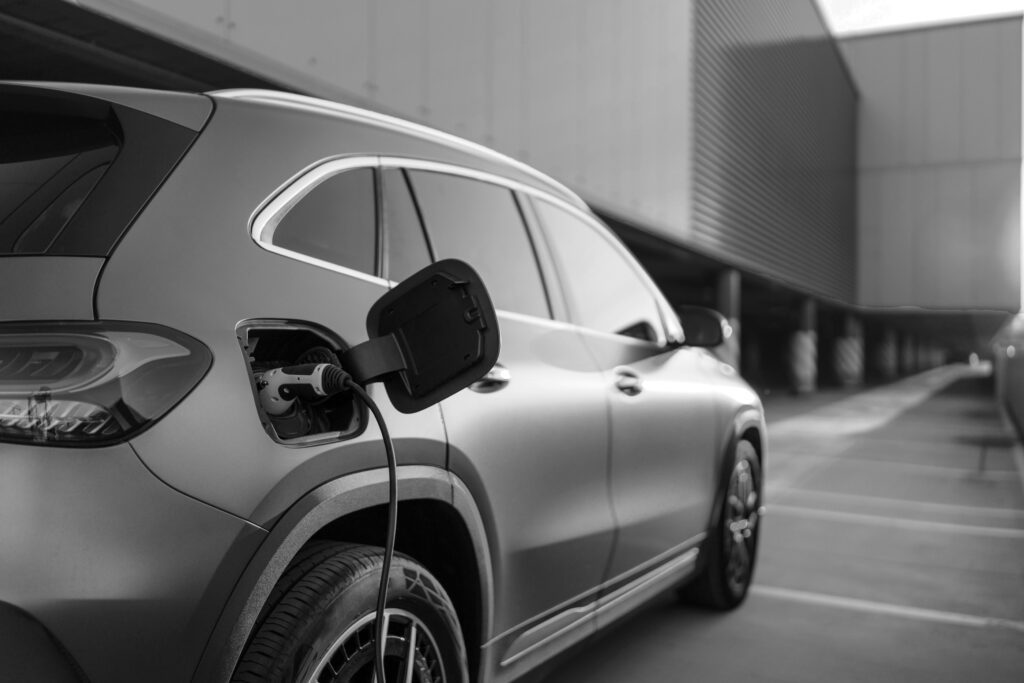Experts now agree that electric cars are the future of personal transportation. However, not everyone is aware of how quickly this development can take place and what impact it will have on our mobility. I would therefore like to take a daring look into the future with you. In 2016, just over 3,000 pure e-cars were sold in Switzerland. This corresponded to a market share of one percent – almost unchanged compared to 2015. In 2020, on the other hand, almost 20,000 pure e-cars were already sold. This meant that the market share was 8% for the year (a doubling compared to 2019) and as high as 16% in December 2020. Manufacturers such as Volkswagen, Ford, GM and Volvo are already massively backing electric cars, and oil suppliers such as Shell and BP have also recognized that the end of the petroleum age is in sight.
What will the future look like? Although no one can predict the future, the speed and impact of disruptive change has often been underestimated in the past. For example, in the early 1990s, German environmental associations dreamed of 5% renewable energy in the German electricity mix. They were laughed at by the rest of the industry for doing so. Today, however, the share is around 50%.
But it is actually irrelevant whether the market share of e-cars will be 30%, 50% or even more in 2025. What is much more important is that by then at the latest it will be clear to all market players that combustion engines will disappear from the market. By the way, this does not only affect the car market, but also commercial vehicles – from vans to buses in public transport and large trucks. In the case of the latter, however, it is still unclear whether batteries or hydrogen will become established as energy storage systems.
What could the world look like in 2025 in concrete terms?
All (major) manufacturers have announced that they will no longer sell internal combustion vehicles from 2030. The prices of corresponding used cars are collapsing. The death of service stations has begun. Smaller garages are giving up because they cannot master the new technology or the investments are too high. Eventually, one or more large manufacturers will have disappeared or been taken over by other companies. Charging stations will be installed as standard in new buildings, and existing buildings will also be converted, since underground garages without charging facilities can no longer be sold or rented.
This development is being driven by the falling prices for e-cars, which, by the way, have been cheaper than comparable internal combustion vehicles for years, especially for frequent drivers. Other factors are the increasing ranges of up to 1,000 km and the growing number of increasingly powerful charging stations.
The world will very likely function differently in 2025 than it does today. Will we have reached a new “normal”? Certainly not. Because automated driving is already just around the corner. But the associated effects will probably be many times greater than the switch from combustion engine vehicles to electric vehicles. Accordingly, this step will not only comprehensively and sustainably change the business models and processes of energy suppliers
What does this mean for the energy industry?
Energy consumption
Even with a market share of 50%, energy consumption will not increase noticeably in 2025. Electricity consumption will “only” increase by around 20 % even if all PWs drive electrically. However, this will not be the case until the 30s.
Peak load
The situation is different for peak load. This will be a challenge in 2025, both locally and in new developments or commercial areas with large fleets. Intelligent charging solutions, local buffer storage, grid reinforcements or a combination of these measures will be needed to meet this load. In the long term, the required charging capacity will grow massively. 4 million vehicles with 11 kW charging capacity each correspond to 44 GW. This is approximately five times the current peak load in Switzerland. Although these vehicles will never all be charged at the same time, intelligent solutions are essential. The good news is that such solutions already exist today.
Second life of batteries
This is a very uncertain, but also very exciting area. It is unclear whether it would make economic sense to convert retired batteries from cars and use them, for example, as storage for regulating power. The potential would be enormous. The nearly 20,000 e-cars sold in 2020 alone (at 60 kWh and 11 kW AC power each) have a capacity/power of 1.2 GWh/220 MW.
Non-public charging stations
This is where utilities have the greatest opportunity for new business models. A market share of 50% corresponds to about 150,000 new vehicles per year, all of which require one or more charging stations (private, employer, public, long-distance). Depending on the specifics, this is a market of several hundred million francs annually, for new installations alone. In addition, there are maintenance, repairs, replacement investments and associated electricity supply contracts (in what will presumably be a liberalized market by then). In addition, good advice to customers is important, especially for larger and complex installations, so that the charging stations work optimally with the photovoltaic system, the heat pump and the battery storage.



